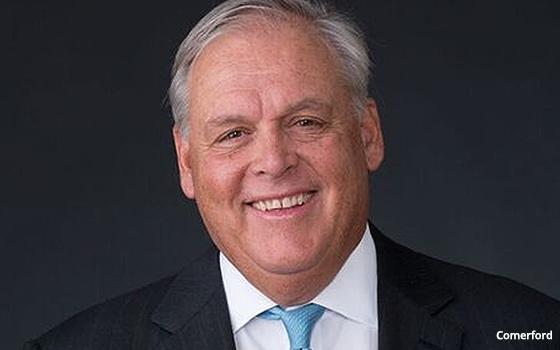NBC TV Stations Keep 'Apple Cart' Upright In Move To Viewer Impressions
- by Wayne Friedman , October 1, 2019
As a number of TV station groups have now joined NBC, recently making the move to using viewer impressions -- shifting from TV ratings to sell advertising -- a top NBC station executive is now emboldened that the group made the right move.
Frank Comerford, the chief revenue officer/president of commercial operations for NBCUniversal Owned TV stations, had been concerned about possibly losing business from media agencies and marketers -- and expressed those concerns about upsetting the “apple cart” in one press report.
In an email exchange with Television News Daily, Comerford now says: “Our decision to use impressions -- which as of last week, we were the first TV group to embrace -- may have risked some of our business. We are not concerned about this anymore.”
advertisement
advertisement
After NBC, a number of TV station groups signaled a move to program impressions from TV ratings: CBS, ABC, Hearst Television and Gray Television. In addition, some media agencies have said they would also make the change to viewer impressions.
Among other things, Comerford said shifting to impressions helps TV stations track all viewing of their content in a fractionalized media industry.
“Ratings were adequate in a less complex media environment. Household ratings and impressions measure the same thing: viewership. As viewership became more and more fragmented, linear ratings points could not capture the newer viewer streams.”
For a long time, TV stations asked for -- but could not get -- similar commercial ratings from Nielsen, something national TV networks have had since 2007. Those commercial ratings have been important to marketers in measuring viewability of their messaging.
Comerford say moving to impressions will help NBC get closer to that commercial data as well: “Our shift to impressions from rating points does not change our measurement environment. Program impressions, utilizing break averaging, will give us a fair approximation of commercial impressions.”
As to what kind of improvement would be seen in revenue, Comerford would not offer specific details, saying only that “it allows us to recapture the measurement of viewers as they move to other distribution platforms... to have a more accurate count of our viewers no matter how they watch our content. It also makes it easier for our partners (clients & agencies) to track how their message gets measured.”
All this will help the rise of digital advertising revenues at NBC’s TV stations.
“We expect stations to use these digital revenue streams to provide at least 10% of their total annual revenue. We also expect the rate of increase on this digital revenue will continue to grow and be the majority -- if not all of our ad revenue as television and digital converge.”
While viewer impressions have not been the basis for making local TV deals for many media agencies with TV stations, many have used impressions as a guide for deals.
Still others say they have been directly making deals on viewer impressions for some time.
Jenifer Weldon, president/owner of Altamonte Springs, Florida-based Fat Free Media, whose clients include personal injury law firm Morgan & Morgan, says: “We’ve negotiated and purchased local broadcast based on impressions for 15 years, currently in 26 local markets including Boston, Philly, New York, LA, Orlando.”
The Television Bureau of Advertising, the trade group for U.S. TV stations, is urging an industry-wide change to viewer impressions-based advertising deals by January 2020.




Any media agency trainee can callculate the small number of GRPs that are added to "linear TV's" audience by dividing the number of digital "impressions" by the population involved. It's a no brainer.
But let's dig in a bit deeper. Say that the brand's planner wants a monthly reach of 65% with an average frequency of 4.0. That translates into 260 GRPs. The buyers may be asked to deliver this, perhaps broken down by daypart and even, in certain cases, by show type. But there are issues. Does an ad being on the user's digital screen for at least two seconds have the same value in terms of likely ad exposure---and message registration---as the identical commercial--- on TV----which is the only thing on the screen and plays from start to finish? Many advertisers and their agencies will not accept this.So if a buyer has gone to the trouble of converting the planner's GRP goals into "impressions" and a seller offers a package that represents, say, 65,000 impressions---or 50 GRPs in a market---the buyer will want to break this down into TV and digital impressions and probably discount the latter. If the digital portion of the seller's package generates 3,000 impressions, these might be cut to only 1,500 impressions and a new total calculated. Next the buyer will have to calculate how many GRPs this represents in order to see how it contributes to the overall GRP goal---and at what CPM. In other words, the whole process is a make work operation designed to catch the unwary buyer into accepting digital "impressions" as if they were equal to TV. They probably aren't.
I recognize that times are tough in local TV ad selling and I appreciate---indeed I endorse---the stations' efforts to capture every bit of viewing that their program content generates. However, selling "impressions" with dubious digital data bundled with TV impressions is not going to fly with many sophisticated buyers and their clients. Assuming that they accept the sourcing for the digital exposures, the buyers will want these expressed as GRPs separately from their TV counterparts so whatever adjustments that are required can be made. Moreover, when makegoods are offered to compensate for rating shortfalls, I doubt that the buyers will accept "digital" impressions as surrogates for TV "impressions". I'd advise the stations involved to rethink this one and talk to the planners, as well as the buyers for their opinions.